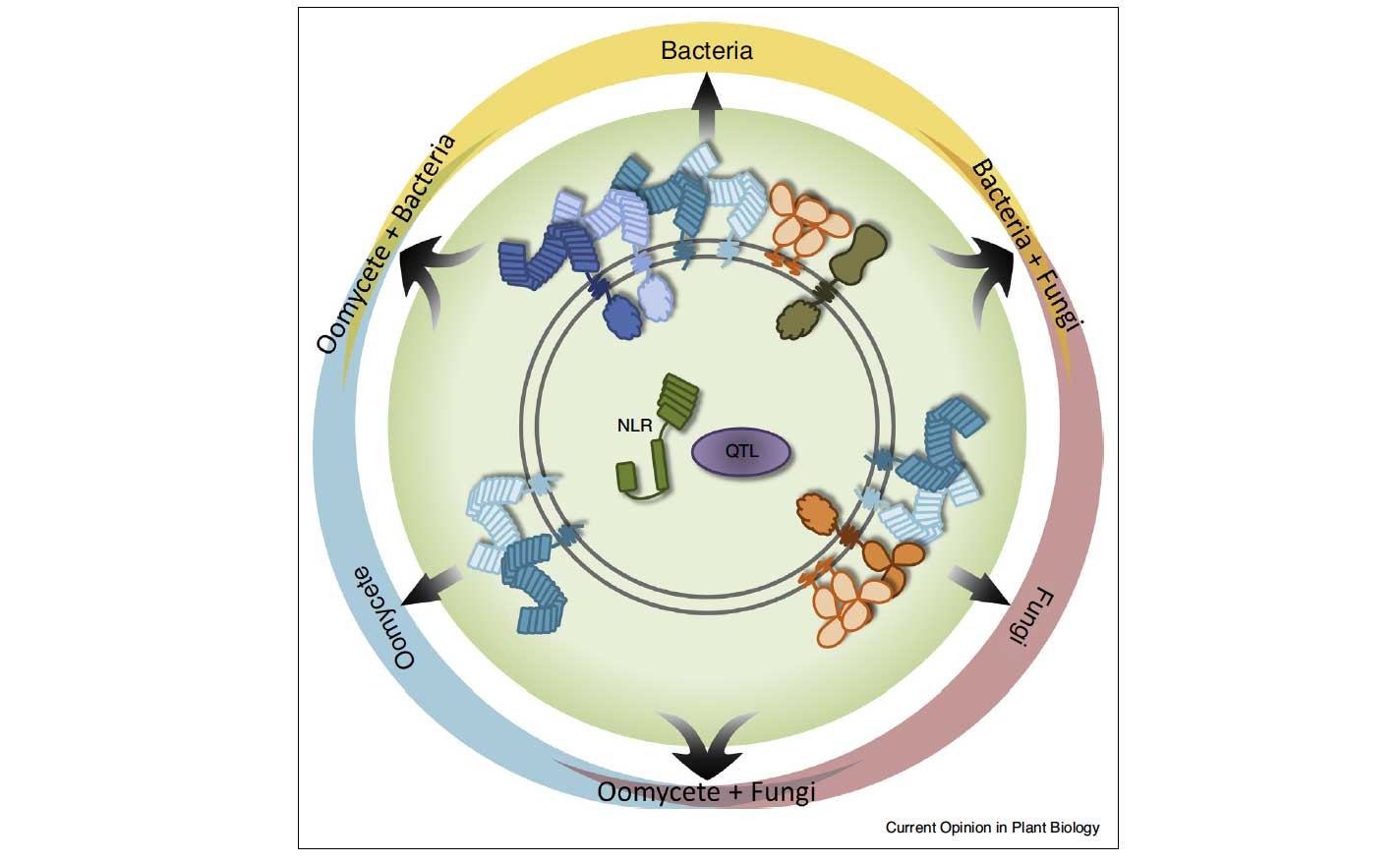博文
CURR OPIN PLANT BIOL:植物细胞表面免疫受体复合物研究综述
||
Plant cell surface immune receptor complex signaling
First author: Wei-Lin Wan; Affiliations: Eberhard Karls University Tübingen (图宾根埃伯哈德·卡尔斯大学): Tübingen, Germany
Corresponding author: Lisha Zhang
Plant plasma membrane pattern recognition receptors are key to microbe sensing and activation of immunity to microbial invasion. Plants employ several types of such receptors that differ mainly in the structure of their ectodomains and the presence or absence of a cytoplasmic protein kinase domain. Plant immune receptors do not function as single entities, but form larger complexes which undergo compositional changes in a ligand-dependent manner. Here, we highlight current knowledge of molecular mechanisms underlying receptor complex dynamics and regulation, and cover early signaling networks implicated in the activation of generic plant immune responses. We further discuss how an increasingly comprehensive set of immune receptors may be employed to engineer crop plants with enhanced, durable resistance to microbial infection.
植物质膜模式识别受体是感知微生物和激活自身免疫,抵抗微生物入侵的关键。植物具有一些这样的受体,不同受体主要在胞外域的机构以及是否存在胞质蛋白激酶结构域上存在差异。植物免疫受体并不单独发挥作用,它们会形成一个复杂的复合体,会经历配体依赖性的成分变化。本文,作者综述了目前我们对于受体复合物动态及调控分子机制的了解,包含与植物免疫响应激活密切相关的早期信号转导网络。作者进一步讨论了如何综合利用这些免疫受体来改良作物育种,增强作物对于微生物感染的抵抗力。
doi: https://doi.org/10.1016/j.pbi.2019.02.001
Journal: Current Opinion in Plant Biology
Published online: March 15, 2019
https://blog.sciencenet.cn/blog-3158122-1171064.html
上一篇:the plant journal:光照在植物黑暗到光照状态转变时期促进下胚轴的伸长
下一篇:Plant Cell:TCP4和PIF3拮抗调控拟南芥幼苗去黄化过程中的子叶展开
全部作者的其他最新博文
- • Plant Physiology:CsMADS3促进柑果中的叶绿素降解和类胡萝卜素合成(华中农业大学)
- • Molecular Plant:LBD11-ROS反馈调节作用于拟南芥的维管形成层增殖和次生生长(浦项科技大学)
- • Science Advances:根结线虫通过调控植物的CLE3-CLV1模块,促进侵染进程(日本熊本大学)
- • Nature Communications:油菜素内酯参与植物营养生长期转变的分子机制解析(浙江农林大学)
- • Current Biology:光合作用产生的蔗糖驱动侧根“生物钟”(德国弗莱堡大学)
- • PNAS:花同源异型基因在叶中被抑制、花中被激活的分子机制(南卡罗来纳大学)

